CONCEPT NOTE
Introduction
It is by now well known that anthropologists and sociologists have for long focused their studies of the tribal communities of India on their culture (sanskriti) comprised of ecology, food gathering, agriculture, arts, crafts, dance, music, language, folklore, magic, witchcraft, religion, festivals, and so on. On the other hand, studies of social structure (samaj) of the tribes have been relatively sidelined. In other words, we have lesser knowledge of their groups, classes and categories, such as family and marriage, lineage and clan, network of kinship and affinity, and the implications of these for other structures of society, especially their political structure. In 1962, Surajit Sinha initiated studies on the social structure of the tribals. Subsequently, by following this approach, a few more scholars have studied the tribals of eastern and central India. In western India, however, no detailed study of the social structure of tribes has been conducted, except The Bhils of Ratanmal by YVS Nath in 1960.
Given this background, Centre for Culture and Development (CCD) has taken up research to fill this lacunae in the context of western India. CCD has studied the social structure of five major tribes, Gamit, Vasava, Chaudhri, Kokna and Warli of south Gujarat. Having completed these five studies, CCD proposes to organise a seminar to deliberate on the theoretical, conceptual and empirical issues arising out of our studies of the tribals of Gujarat, and by extention, those of India in general.
We should recognize that the wider political, economic and social framework within which the tribals have to live, has been changing from time to time. This framework changed remarkably first during the British colonial regime and thereafter with the enactment of the Constition of independent India in 1950. It is clear that there is as yet no definite definition of ‘tribe’ in India except the administrative one (for a discussion of this point, see Shah 2010: 14-25, 205-13)[1]. Accordingly, the Constitution has a list of what are called ‘Scheduled Tribes.’ There are a total of about 700 STs in India as a whole, of which there are 31 in Gujarat State. CCD has studied the social structure of five of these tribes in Gujarat.
It is well known that ‘village studies’ focused on field work taking a village as the unit of study in a holistic manner in the 1950s, played a crucial role in development of sociology and social anthropology in India. These studies were not only different in their subject matter, namely, village society, but also in their innovative approach to understand the rurality. Unlike earlier Oriental or Indological perspectives, constructed from Hindu scriptures and historical records, these studies were based on field work or participant observation to examine the interrelated parts of a single village[2]. Though these studies brought out a vast amount of empirical reality, they were focused on caste based formations rather than on tribal society. Now, in our study of tribal society at CCD we have undertaken a holistic view of one village in each of the five tribes, and we have focused on social structure of the tribals in these villages. The social structure is taken as revolving around the nucleus of household and family, lineage, clan, marriage, and network of kinship and affinity. We shall then compare the five villages and try to reflect on tribal society in Gujarat and, by extention, of India in general.
Household and family
The household is a basic dimension of the family. It is both a residential and commensal unit - both ‘ghar’ (house) and ‘chula’ (hearth). It is the primary site not only for everyday affairs of life but also for many of its most intense sentiments and emotions. It is also related to the larger entity of the family. The households in the tribal villages can be classified into certain types on the basis of their numerical and kinship compositions.
The term ‘life cycle’ is applied to a man or a woman, while the term ‘developmental cycle’ is applied to the household or family or domestic group. Anthropologists also make a distinction between cycle and process (see Shah1998)[3]. The structure of the household is not static in nature, but necessarily involves a developmental process over time. It goes through various phases of development that may be called the development cycle of the household. It has, like any structure, its own life. It remains a structural unit because its elements and components keep replacing. Though the household dimension is one of the important components of family, it has been least studied among the tribals of Gujarat.
Clan, lineage and Kinship
The relationships of kinship and affinity are symbolically expressed in what are called ‘kinship terms’ by which kin members are ‘related’ and ‘called’. The former are called terms of reference while the latter are known as terms of address. The kinship terms and their usage form the building blocks of kinship system. The kinship terms have to be studied in relation to their larger implications; they have to be analysed in relation to the whole system of which they are a part (Radcliff-brown 1950: 7).[4] There can be several criteria used to analyse the kinship terms. One of the models is based on Kroeber’s (1909) and Lowie’s (1928) nine criteria of distinction.
The kinship relationship is not static but a dynamic one which controls the varying nature of kinship obligations and behaviour. There are particular kin members who have special status of respect and authority, while for others avoidance is observed. At the same time there are kin members who are very close and have joking relationship. Kinship is also important for social and economic function of group, viz., inheritance.
The households and families are grouped into lineages in the village. Lineages in turn are grouped into clans. After a few generations the households in a lineage group get distributed in different villages, mainly through migration. Generally, the members of a lineage are able to trace their genealogical ties to their ancestor who actually lived four to five generations ago. Each lineage is an exogamous group and thus regulates marriages. Since a lineage is patrilineal, the daughters move out by marriage and wives move into it. A lineage is not only a group of recognition; it is also a ‘corporate group’. All the members of a lineage collectively participate in one or more rituals.
The clan system is an important characteristic of the tribal society. Each tribe is usually divided into several clan groups, each having its own name and identity. However, it is not universal.
Marriage networks
The analysis of marital networks deals with the spread of affinal relations and the resulting kin ties. It includes the criteria for selecting spouses and the spatial distribution of affinal links. We consider here marriage link’s distance, marriage network, marriage repetition, and marriage direction. All these define the social space among people in the tribal society. The social space defined by marriage network continues for generations with some exceptions. Like all social structures, it is not a static phenomenon. New marriage linkages can be observed in some of the recent marriages. There are both change as well as continuity in tribal marriage structure.
Using these criteria and some others, the social systems may be compared in the regional context to arrive at their differences and similarities. To arrive at an understanding of social structure of a tribe one must use comparison of many different systems with one another. This can only be done after subjecting a single system to systematic analysis. An understanding of tribal clan, lineage, kinship and marriage network is important to understand their larger implications, and their differences and resemblances with the neighbouring societies, both tribal and non-tribal.
The Purpose of this Seminar
The proposed seminar would be a forum to discuss and debate the theoretical, conceptual and empirical issues about the tribals in Gujarat and India. It will facilitate collaboration with different stakeholders in promoting an understanding of tribal society through different kinds of theoretical approaches. It is expected that the discussion during the seminar would provide new insights into the tribal society in general and tribal social structure in particular. It is incongruous to lump together all the 700 odd tribal communities into a common box and design a common strategy for any intervention. We need to understand the tribal society first before we intervene in their lives. Thus, the deliberations in the proposed seminar are expected to bring out multi-dimensional outcomes and prospects for further academic explorations in the areas of social structure of tribal India.
Objectives of the National Seminar:
- To explore different perspectives for understanding tribal society in India.
- To know the existing empirical realities of tribal India.
- To understand the tribal society from a fresh perspective that is non-colonial, non-separatist and unbiased.
- To accumulate conceptual ideas of structural patterns, underlying rules of tribal society and the processes operating it.
This seminar wishes to examine social structure of tribal India in the following dimensions:
- Household and family
- Marriage system, marriage network and social space,
- Tribal Kinship
- Clans and their segmentation in Tribal India
- Political anthropology of Tribal India
- Other aspects
Seminar Plan and Topics
Papers are invited on the following broad themes:
1. The Household and Family in Tribal India
- Household dimension
- Types of Families
- The concept of joint and nuclear family
- The large or small family
2. Marriage, Marriage Network and Social Space in Tribal India
- Marriage system
- Marriage Network
- Types of marriage in Tribal India
- Marriage region
- Geography of marriage
3. Kinship System and Network in Tribal India
- Kinship terms and kinship system
- Kinship of Tribals
- Kinship and marriage
- Types of Kinship in Tribal
- Kinship and inheritance
4. Tribal Segmentation
- Linguistic segmentation
- Geographic segmentation
- Clan segmentation
5. Political Structure of Tribal India
- Traditional political structure
- State and tribals
- Kinship and polity
- Land and polity
[1] Shah, A.M. 2010. The Structure of Indian Society: Then and Now, New Delhi: Routledge.
[2]Jodhka, Surinder 1998. “From ‘book view’ to ‘field view’ Social anthropological constructions of the Indian village”, Oxform Development Studies, 26 (3): 311-331. For more limitations and strengths of these studies, see Thakur, Manish 2014, Indian Village: A conceptual history, Jaipur: Rawat.
[3] Shah, A. M. 1998. The Family in India: Critical Essays, Delhi: Orient Longman.
[4] Radcliffe-brown, A R. (1950). “Introduction”, In Radcliff-brown and Daryll Forde (eds.) African Systems of Kinship and Marriage. London: Oxford University Press.
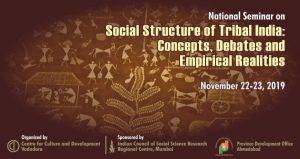
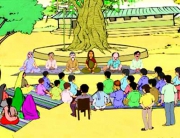
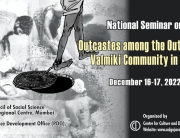

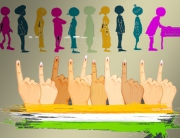
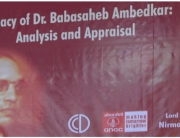
Add Comment